Your cart is currently empty!
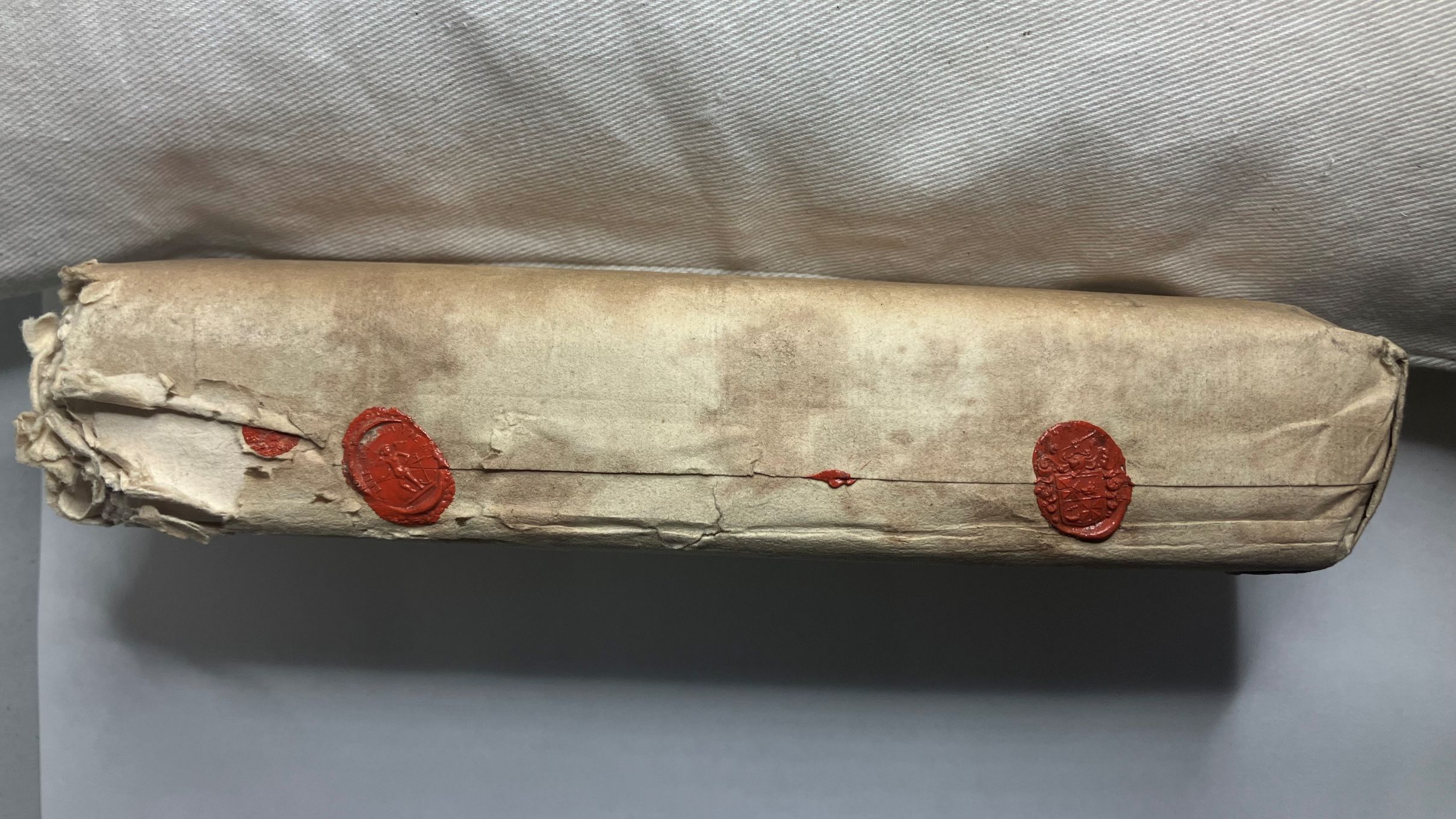
Signed, sealed, delivered . . . and unopened
The majority of items we hold in the archive have been read many, many times before – usually by pairs of eyes long since departed from this world. However, during recent cataloguing work we came across a hugely exciting find: an unopened bundle of documents from 1709! The folded contents of this neat little packet have been carefully wrapped in a paper cover endorsed ‘Instructions of the Sherriff of Argylls accots [accounts] crop 1709’.
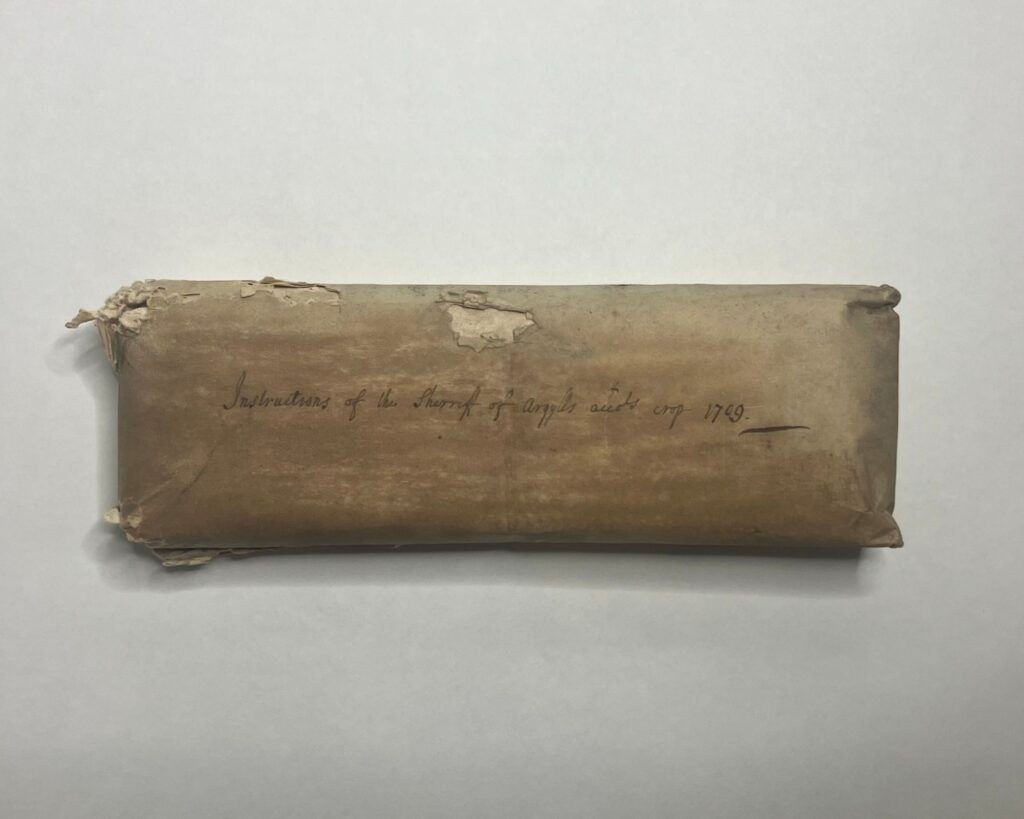
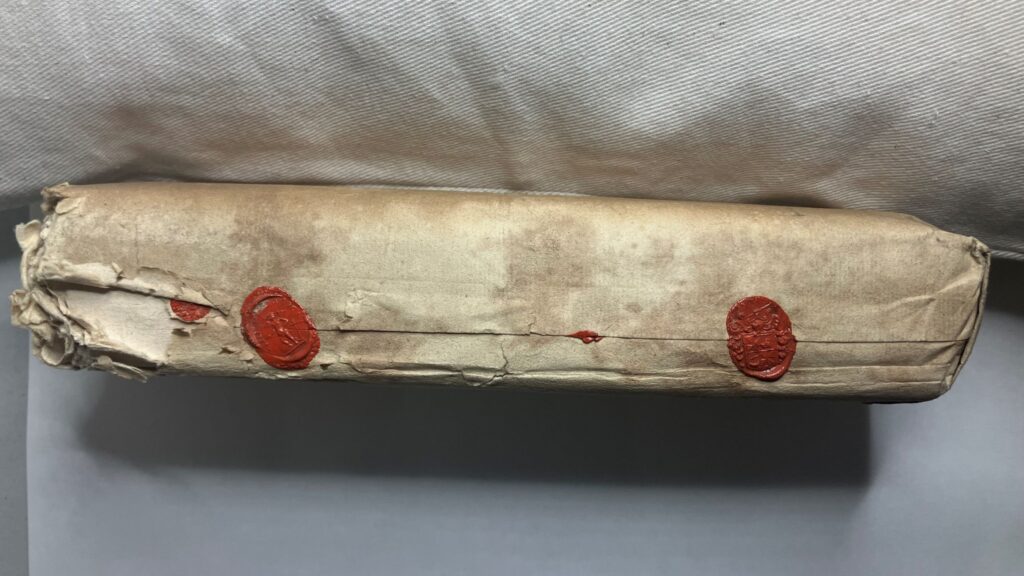
The packet has been sealed shut four times at the seams and, remarkably, all the seal impressions are intact. The impressions themselves are quite small and were probably made using a fob seal or signet ring. Three different seals were used: 1) a classical head in profile, possibly female; 2) a winged figure standing next to an anchor accompanied by the French motto ‘Elle me soutient’ (she supports me); & 3) the armorial achievement of the Campbells of Stonefield. The last is significant because the sheriff depute of Argyll in 1709 was none other than James Campbell of Stonefield (d. 1729), an able and active administrator who also served as chamberlain to the 2nd duke of Argyll.[1]
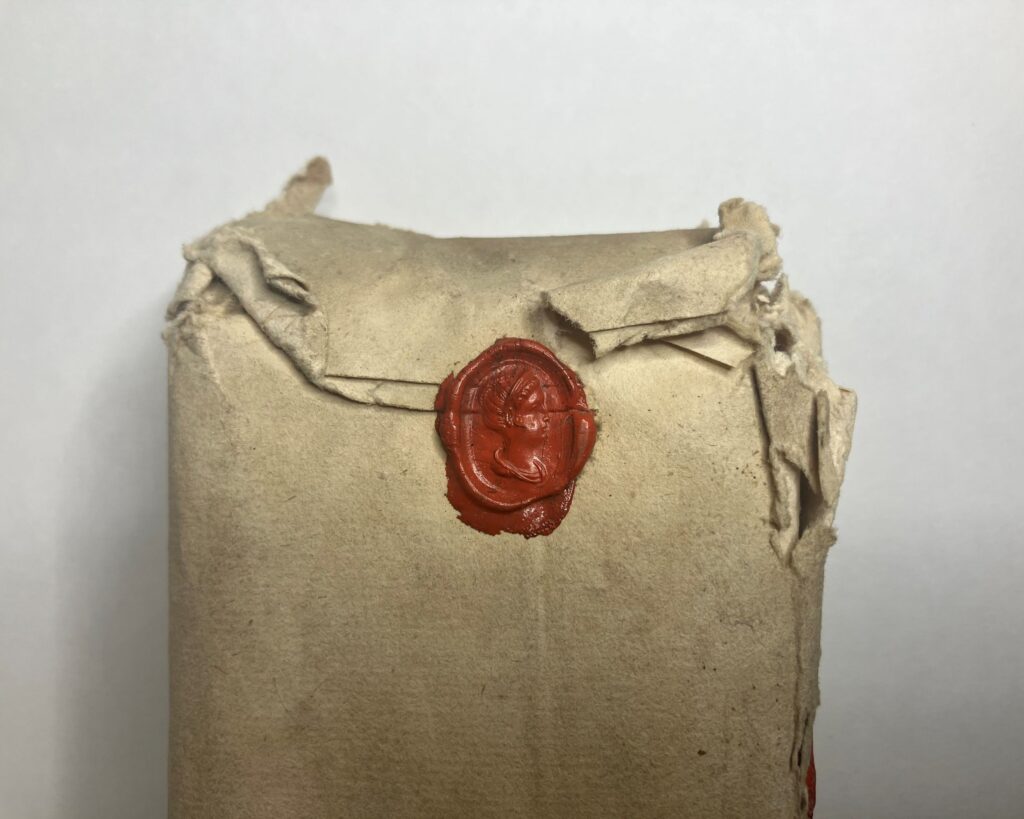
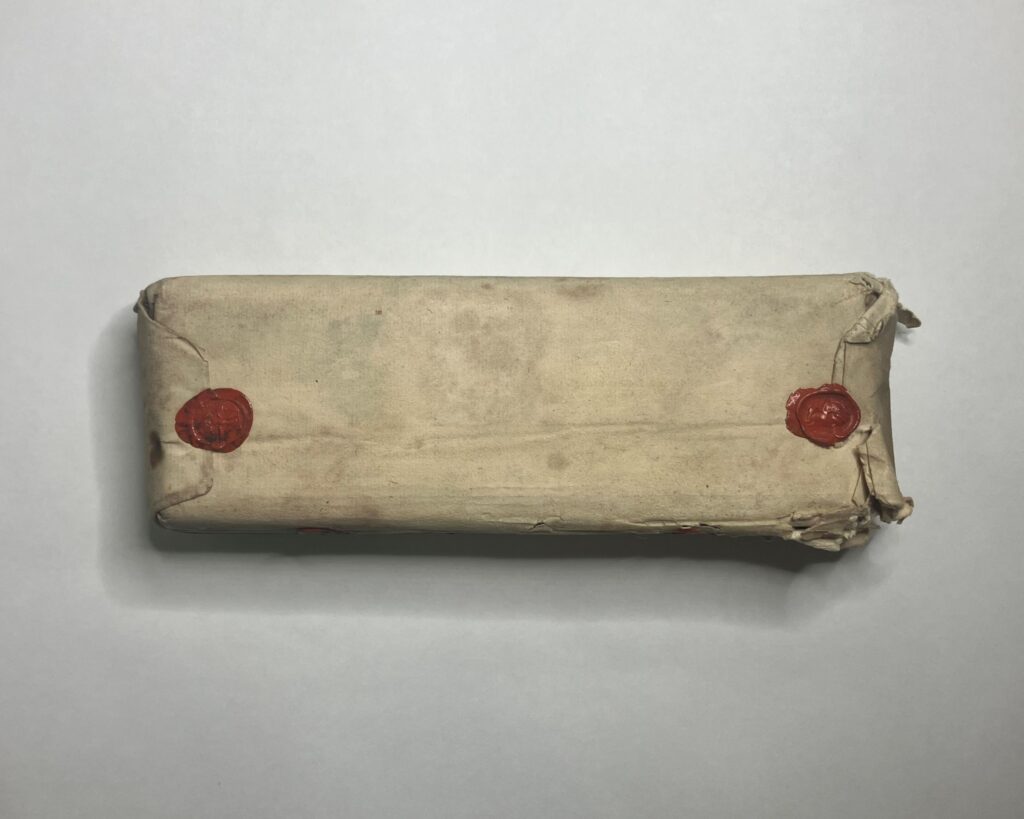
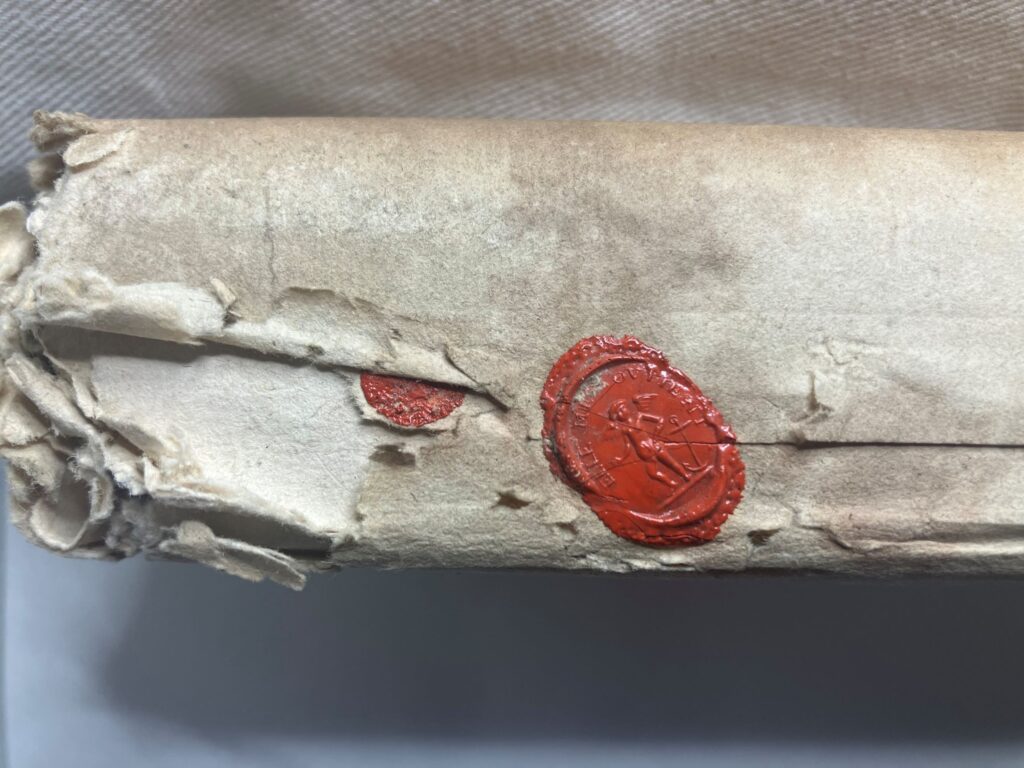
While the note on the cover of this unopened bundle suggests that the contents are nothing more than mundane financial papers (too boring perhaps to be opened!) there could in fact be many reasons why these documents have remained sealed, potentially for over 300 years. The only way of knowing for sure would be to break the seals – something which we will never do, under any circumstances.
It’s incredibly rare to find just one unopened letter in the archive, and a whole packet is something entirely new for us. The discovery gives a tremendously valuable insight into how estate and other records were packaged up and sent out for delivery, often over long distances and in all weathers by horseback, foot and ferry boat. In addition, as an artefact in its own right the bundle is deeply satisfying to look at and handle. There is a pleasing heft to it which, coupled with the softness of the paper wrapper, makes for a truly tactile piece of history.
It has been suggested that the latest in X-ray microscope technology could enable us to ‘read’ the contents of the packet by producing 3D volumetric images without the need to break the seals. This is a fascinating prospect and one we would definitely be interesting in pursuing should the opportunity arise, although we suspect the costs involved would be rather more than the value of the sheriff of Argyll’s accounts for 1709!
[1] The online Dictionaries of the Scots Language resource gives the following historical definition of a sheriff and sheriff depute, taken from vol 8 of the Scottish National Dictionary (first published 1971): ‘1. Orig. the chief royal officer in a shire or county responsible for peace and order in his area and having civil and criminal jurisdiction. Many sheriffdoms became hereditary in a landed family and a trained lawyer was usually appointed as sheriff depute to perform the judicial functions of the office. After the abolition of heritable jurisdictions in Scotland in 1748 the sheriff depute succeeded to the duties of sheriff and is now known as sheriff principal, having in turn a deputy or deputies, known as sheriffs, who perform most of the civil and criminal judicial duties of the office besides many other administrative duties.’
Leave a Reply